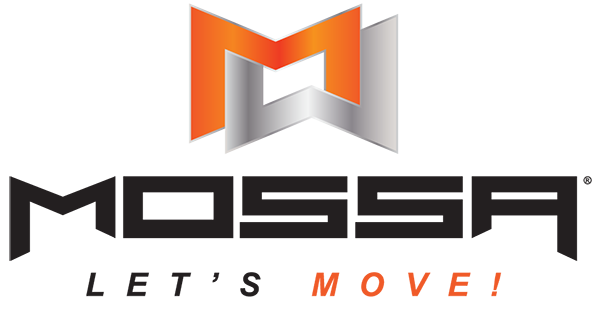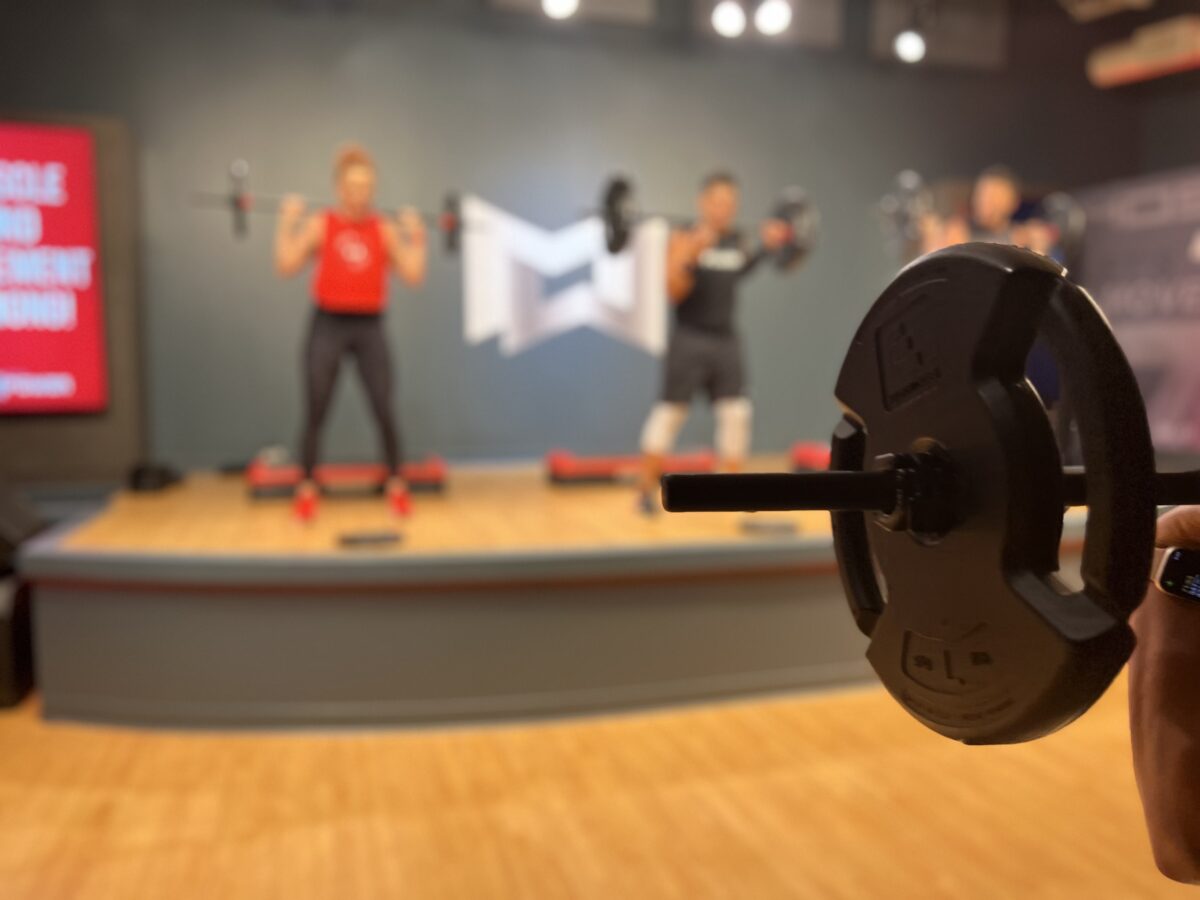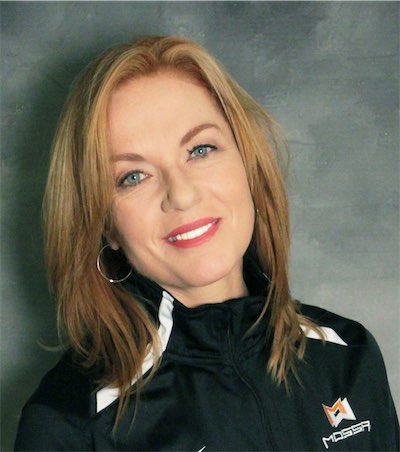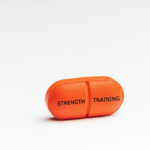Freestyle versus pre-choreographed group fitness. It’s a debate as old as group fitness itself, or at least as old as the leg warmers, thong leotards, and cassette tapes we sported when I started teaching “aerobics” in the 1980s.
Early in my career, freestyle – where instructors build a class any way they want – was the only model. Pre-choreography – or pre-programming – came along later, and today delivers workouts that are pre-designed from the ground up, including movements and music.
Which model delivers freedom for instructors? And excitement and results for members? And a program that’s easier to manage? Having experienced group fitness in every form, I’ll share my feeling on the great debate, and I hope to debunk some common misconceptions about pre-programming.
Myth #1: It is always the same.
Yes, certain elements of a pre-programmed workout are the same. That’s the point. But many elements change from workout to workout. At MOSSA, we say our workouts – which are pre-programmed – are always and never the same.
Here’s the “always the same” part: We are after program loyalty, meaning the experience must be consistent. Participants know what equipment to use. They know what the class format will look like. There is reliability in the language and the staple movements, no matter the instructor, day, time, or location.
But we also know that participants like a certain amount of surprise and delight. This is the “never the same” part: how we reach the physical objectives. Maybe the training type will alter. The reps, rhythms, break lengths, and transitions will vary. Exercise selection will vary. And of course, the music will vary. People will consistently improve their fitness, but the way they get there…will vary!
Myth #2: Participants will get bored.
Yes, we have heard stories of instructors teaching the same pre-programmed workout for three months straight. And, yes, I’m deathly bored just thinking about it! But here’s how we beat boredom in the pre-programmed model: MOSSA instructors are trained to stick to “shelf life,” which is the length of time in which we recommend teaching a specific workout. For Group Power, for example, we suggest teaching the same workout for three to four weeks, during which time participants will improve and get stronger.
After this period, instructors incorporate past workouts into the remaining eight weeks of the quarterly cycle, again sticking with the shelf life, until a new release is launched. And the cycle continues!
Myth #3: You take away instructor creativity.
The freestyle model assumes (and requires) that instructors are also workout designers and music producers. And that might be true…but it’s not often the case. Let’s compare fitness instructors to people on a different stage: Broadway. A stage production has performers and script writers. Only rarely, maybe Lin-Manuel Miranda in Hamilton, are they one and the same. More often there are experts in each discipline – visionaries in their own lanes.
In our business, instructors are performers…not necessarily workout designers. People gravitate towards being an instructor not because they love creating choreography, but because they love motivating and coaching people. They love teaching. They don’t necessarily love creating programming.
With a pre-programmed workout, an instructor’s creative bandwidth is now available to deliver an amazing experience. Instead of spending time choosing music and making up moves, the focus is on how to be an effective, entertaining, inspiring, connected coach.
Myth #4: Participants won’t like the music.
In the same way instructors aren’t screenwriters, they may not be DJs either. And that’s the trouble with freestyle music; it’s a single person’s choice. If that instructor likes hard rock, you’re in for a hard rock workout…every time.
With pre-programmed workouts – at least at MOSSA – the playlist has something for everyone (hits from many decades and genres), the movements are driven by the music, and the music is thoroughly tested for broad appeal. Will every participant love every single song? Maybe not, but we leverage that diversity to help clubs pack rooms with a diverse audience (different music tastes and, by design, different demographics).
Myth #5: Pre-programmed workouts are hard to learn.
Like any muscle, the memorization muscle builds and grows with training. Maybe initially, learning pre-programmed workouts takes some extra time, but instructors create their own personal learning systems, and the process becomes more efficient.
Myth #6: The programs have been around so long that they are “old fashioned.”
The names – Group Power, Group Core, Group Ride – may be the same, but the brands have evolved and grown with the times. For example, 10 years ago, Group Power was a very barbell-centric workout, which also made it very linear with less variety and variability across workouts, because…well, you can only do so many movements with a barbell. But we’ve evolved Group Power to add more training with plates and body weight. Now, there is more three-dimensional movement ensuring that participants are not just muscle strong, but that they are also movement strong.
This evolution also means that participants grow with the programs, getting stronger from workout to workout, while continuing to experience results for as long as they do the workouts – for decades and beyond.
Myth #7: It’s all or nothing.
A group fitness program can be a peaceful – and popular – coexistence of both amazing pre-programmed workouts and high-quality freestyle classes. And specialty classes, pop-up classes…something for everyone! (Although we do have recommendations for successful scheduling; a topic for a different day.) Bottom line, you don’t have to choose all one or the other, and in fact, instructors can cross over!
Myth #8: It is harder to manage.
Let’s say you own a restaurant, you have a few different chefs, and they get to cook whatever they want every time they come to work. What would your menu look like? Would you be able to attract loyal customers? Or would the customers be loyal to a particular chef? And what if your most popular chef left?
The business model of pre-choreographed group fitness is the same business model of any successful restaurant, coffee shop…any service industry experience. The goal is to create a reliable, high-quality, repeatable experience, one where you can slot in any instructor, and that instructor will deliver the consistent workout members love. That’s a program-driven schedule versus an instructor-driven schedule. And it’s proven to be more sustainable, more successful, and easier to manage.
…
At MOSSA, we’ve had a front row seat to the evolution of group fitness, we’ve tasted every recipe, and we may have mixed every metaphor to prove what we know to be true: the pre-programmed model benefits instructors, members, and facilities. If your group fitness program needs a revival, you have performers writing bland scripts, you have too many items on your menu or too many rogue chefs in the kitchen, let’s talk!



 More than Muscles: Benefits of Strength Training
More than Muscles: Benefits of Strength Training New Member Onboarding: Over-Welcoming or Overwhelming?
New Member Onboarding: Over-Welcoming or Overwhelming? Team vs. Technology and the Future of Fitness
Team vs. Technology and the Future of Fitness Setting Goals for Group Fitness
Setting Goals for Group Fitness Does Exercise Have to be Boring and Bitter?
Does Exercise Have to be Boring and Bitter?